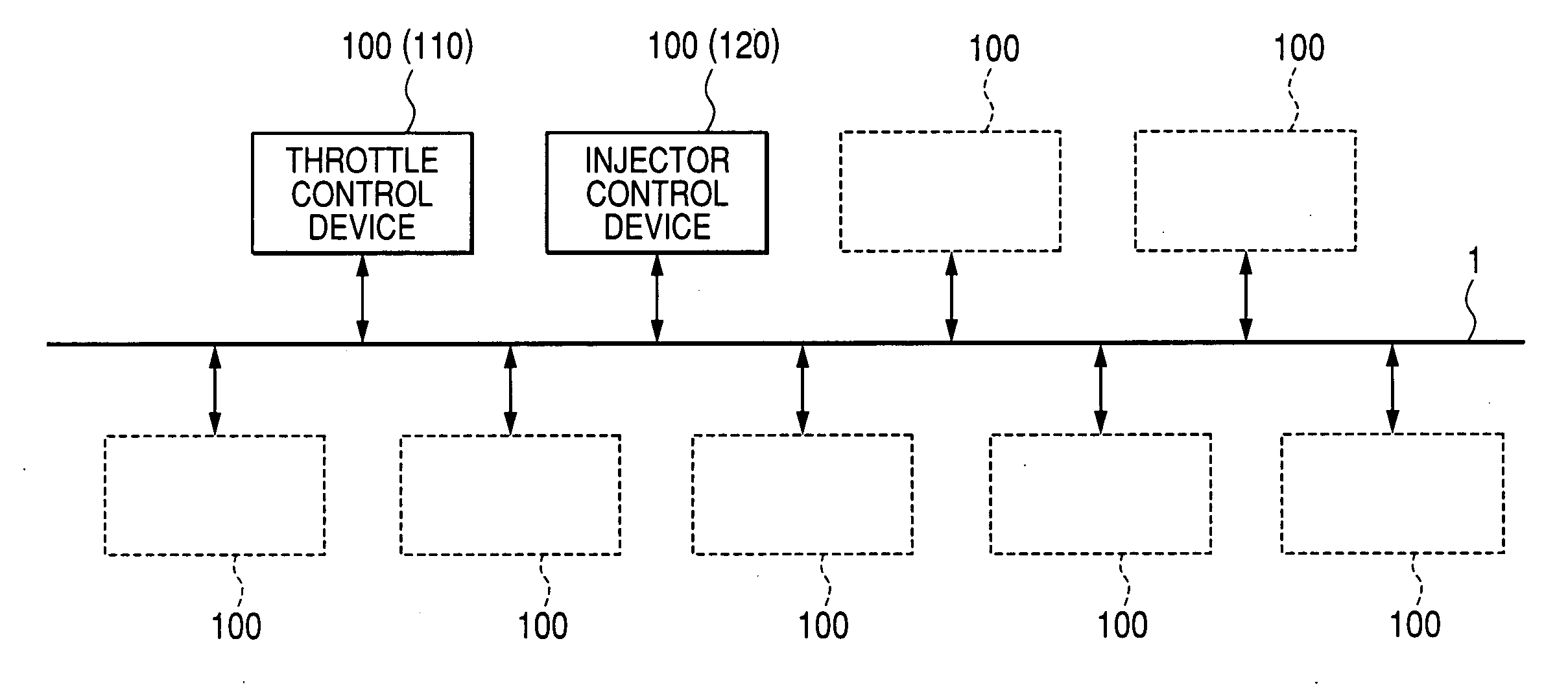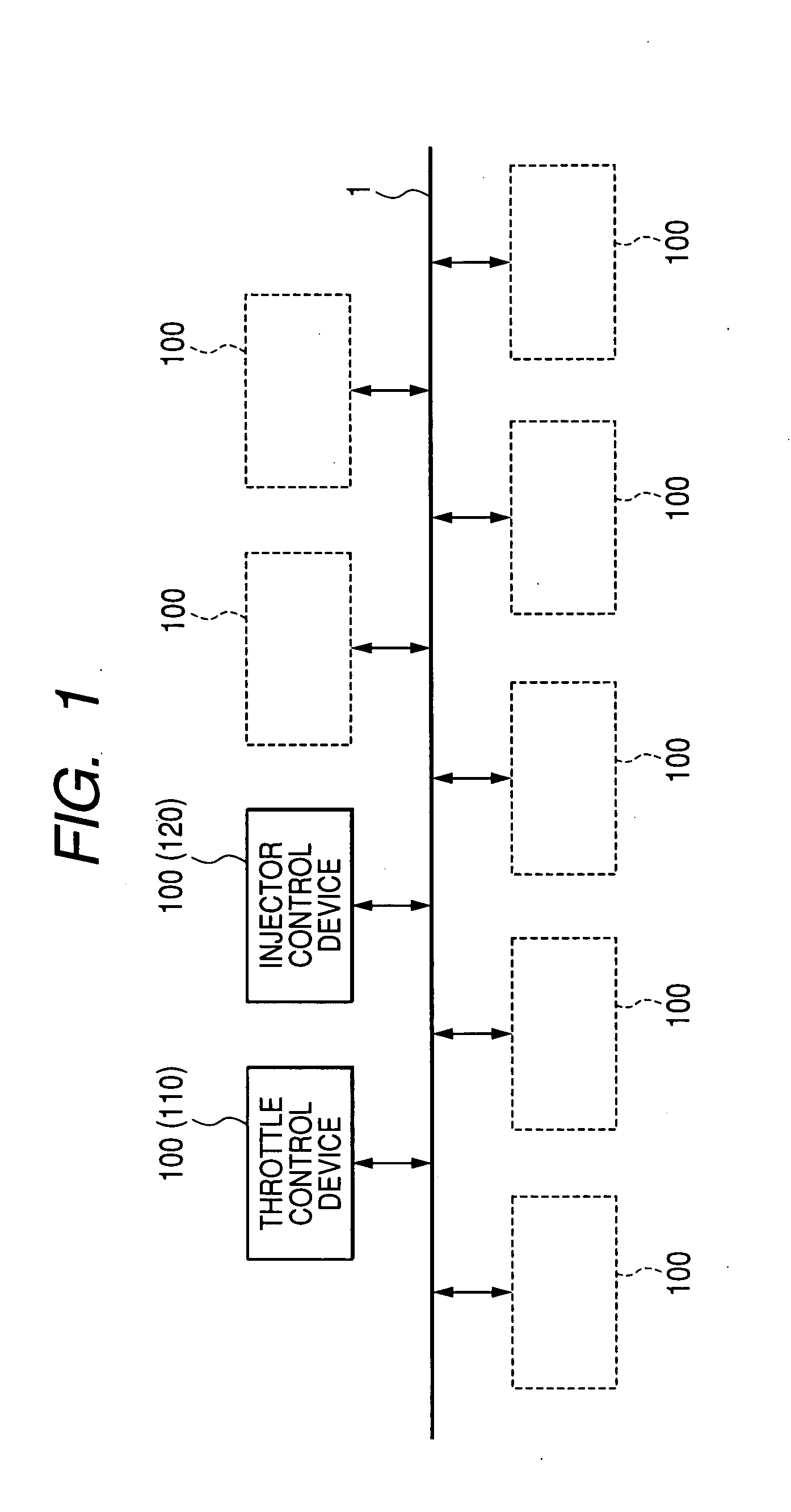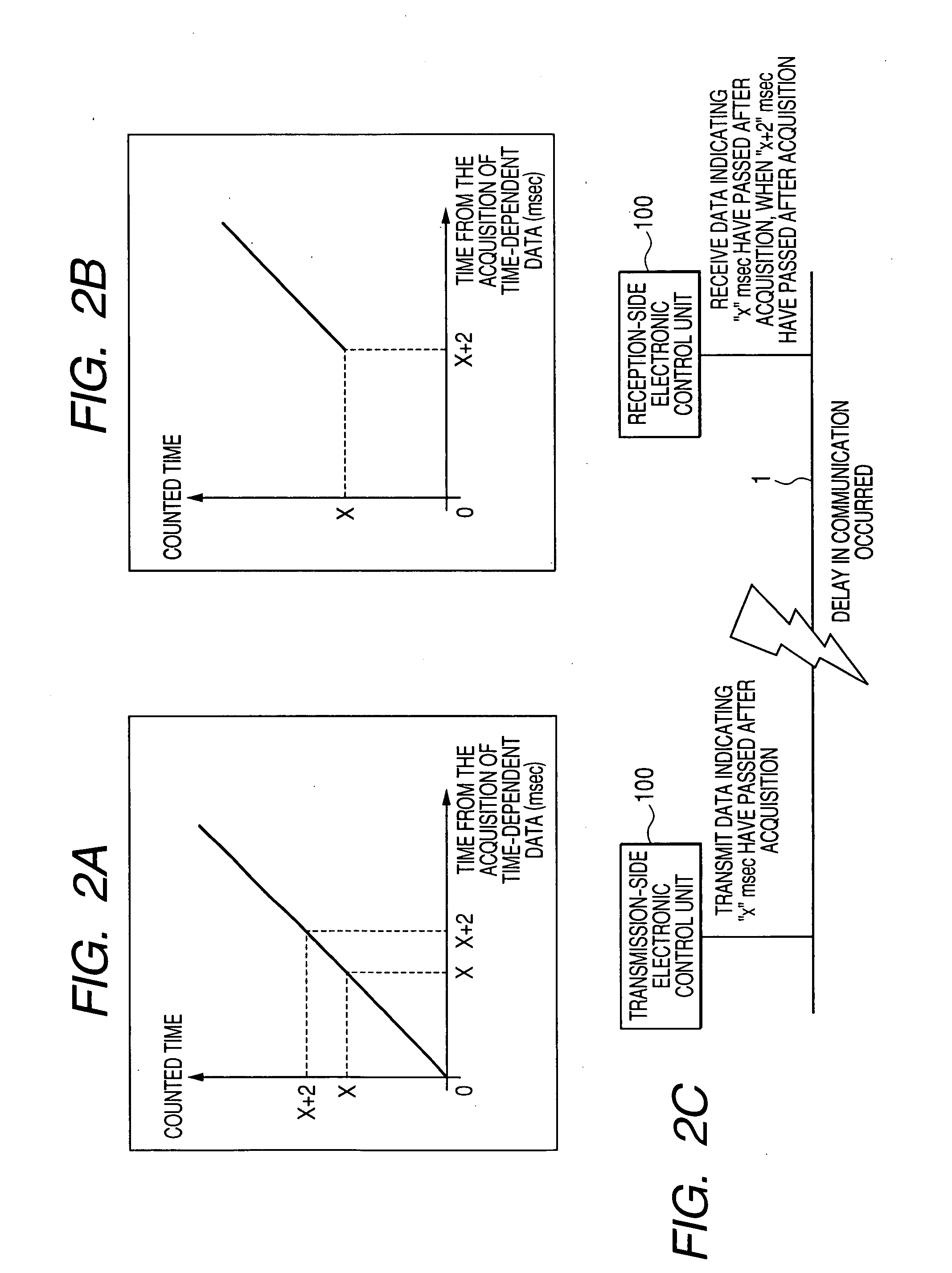Electronic control units for controlling in-vehicle devices using time-dependent data and vehicle control system integrating such units for real-time distributed control
a technology of electronic control and in-vehicle devices, applied in vehicle position/course/altitude control, process and machine control, instruments, etc., can solve the problems of delay time in communication not being reflected, and adverse effect on the adequacy of distributed control
- Summary
- Abstract
- Description
- Claims
- Application Information
AI Technical Summary
Benefits of technology
Problems solved by technology
Method used
Image
Examples
first embodiment
[0049]With reference to FIGS. 1 to 8, hereinafter is described a first embodiment of a vehicle control system and electronic control units used for the system of the present invention. The vehicle control system according to the present embodiment also employs a system which utilizes the time-synchronization network system to perform the so-called real-time control through a plurality of electronic control units on an in-vehicle network.
[0050]In particular, as shown in FIG. 1, the vehicle control system according to the present invention is provided with a plurality of electronic control units 100 including a throttle valve control device 110 for controlling the degree of opening of a throttle valve while measuring an amount of air sucked by an intake system (amount of intake air) of an internal combustion engine, and an injector control device 120 for controlling an amount of fuel, for example, injected by an injector while calculating an amount of fuel to be supplied (amount of fu...
second embodiment
[0093]With reference to FIGS. 9 to 11, hereinafter is described a vehicle control system and electronic control units used for the system, according to a second embodiment of the present invention. In the second embodiment, the identical or similar components to those in the first embodiment are given the same references for the sake of simplification or omission of explanation.
[0094]The vehicle control system of the present embodiment is substantially the same as the vehicle control system (see FIG. 1) of the first embodiment. In particular, the present embodiment also employs a time-synchronization network system to perform so-called real-time control through a plurality of electronic control units on an in-vehicle network. Thus, the in-vehicle network 1 in the system of the present embodiment includes a plurality of electronic control units 100. Also, similar to the first embodiment, the vehicle control system of the present embodiment performs the following processes:[0095]The t...
PUM
 Login to View More
Login to View More Abstract
Description
Claims
Application Information
 Login to View More
Login to View More - R&D
- Intellectual Property
- Life Sciences
- Materials
- Tech Scout
- Unparalleled Data Quality
- Higher Quality Content
- 60% Fewer Hallucinations
Browse by: Latest US Patents, China's latest patents, Technical Efficacy Thesaurus, Application Domain, Technology Topic, Popular Technical Reports.
© 2025 PatSnap. All rights reserved.Legal|Privacy policy|Modern Slavery Act Transparency Statement|Sitemap|About US| Contact US: help@patsnap.com



